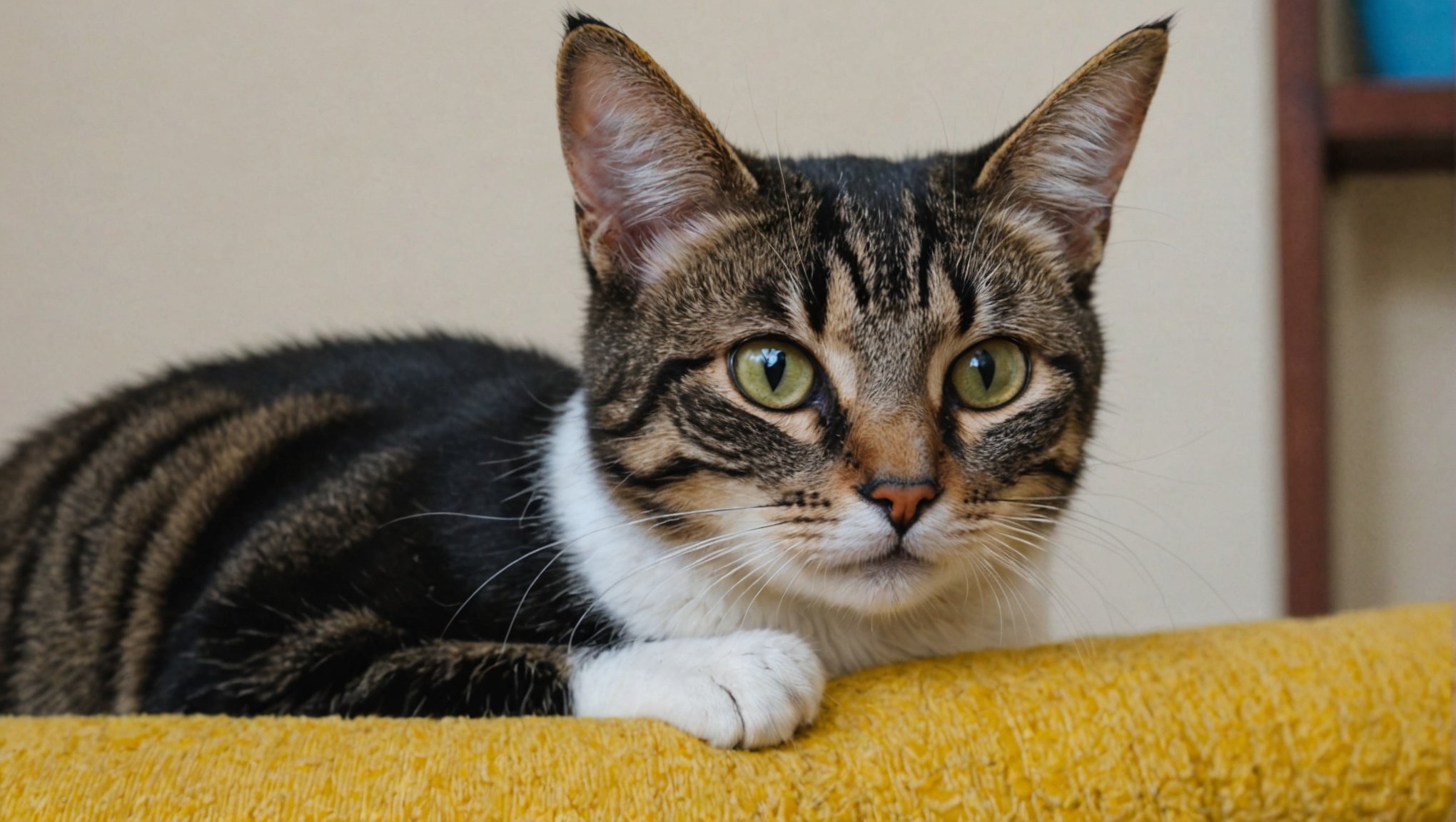Understanding the Needs of Rescued Street Cats
Rescued street cats often face unique challenges as they transition into a home environment. Understanding their past experiences can provide insights into their behaviour. Street life’s hardships may lead to distrust or fear, making patience and empathy essential.
These cats have likely had to fend for themselves, encountering unpredictable and sometimes harsh conditions. This background shapes their behaviour in significant ways. They might display aggression or withdrawal, both manifestations of survival instincts. Recognising these instinctual behaviours is crucial for addressing their needs.
Have you seen this : Crafting a Fun and Effective Indoor Exercise Plan for Your Feline Friend
Adapting to a new setting requires time. The transition process can be eased by creating a safe and calm environment. Introduce new stimuli slowly, allowing the cat to explore at its own pace. Gradually, these efforts help reduce anxiety and build trust.
Patience is an indispensable ally—rushing a cat into new routines increases stress and postpones adjustment. Instead, moving at the cat’s pace fosters a greater sense of security. With empathy and a structured approach, rescued street cats begin to feel at home and can form strong bonds with their caregivers. Understanding and addressing their unique needs not only benefits the cats but also enriches the lives of their human companions.
Also read : Crafting a Fun DIY Puzzle Feeder for Your Feline Friend: Step-by-Step Guide
Preparing Your Home for a New Cat
Bringing a new feline friend into your home brings joy, but ensuring their environment is safe and welcoming is crucial. Cat-proofing your home involves a few thoughtful adjustments. First, remove hazardous items like wires, small objects, or plants toxic to cats. Consider securing cabinets and removing breakable objects from accessible shelves.
Creating a designated safe space for your cat can help them acclimate. Cats often feel more secure with a personal retreat, so establish an area with a comfortable bed, toys, and scratching posts. This safe haven reduces stress as they navigate their new surroundings.
Setting up a comfortable environment requires some necessary supplies. Include essentials such as a litter box, fresh litter, and a variety of interactive toys to keep them entertained. It’s also wise to provide elevated surfaces, as cats enjoy surveying their domain from a high vantage point.
Adjusting your home for a cat’s presence ensures their safety and comfort. By cat-proofing and supplying appropriate resources, you’ll foster a nurturing space for your new companion. With these preparations, welcoming a cat becomes a smooth and joyful transition—for both you and your feline friend.
Establishing a Healthy Routine
Creating a consistent daily routine is crucial for the comfort and well-being of rescued cats. Familiarity in their daily life fosters a sense of security, reducing stress and anxiety. Integrating a set feeding schedule into this routine is beneficial not only in reinforcing reliability but also in managing cat health.
Rescued cats may require special attention when it comes to nutrition. It’s essential to select a high-quality diet tailored to their specific needs, considering any past malnourishment. Portion control is key; overfeeding can lead to obesity, while underfeeding might cause nutritional deficiencies.
It’s advisable to consult a veterinarian to create an appropriate diet plan, ensuring your cat receives the necessary vitamins and minerals. A consistent feeding schedule can help prevent digestive issues and establishes expectations, adding predictability to their day.
During this transitional period, closely monitor your cat’s health and behaviour for any noticeable changes. Increased lethargy, loss of appetite, or altered grooming habits can signal underlying health issues, necessitating professional advice. Paying attention to these factors aids in timely interventions, promoting overall well-being.
Maintaining a routine and offering adequate nutrition not only supports physical health but strengthens the bond between you and your feline companion.
Socializing Your Rescued Cat
When it comes to cat socialization, patience and understanding are essential. Rescued cats often have varied backgrounds, which means some may be more fearful or cautious around humans. The key is to allow the cat to set the pace for interaction. Start by providing a safe space where your cat can retreat and feel secure. This could be a quiet room or a cozy corner with essentials like food, water, litter box, and a comfortable bed.
Bonding can be enhanced through gentle and positive interactions. Speak in a soft, calming voice and try offering treats to encourage your cat to approach. Over time, these positive experiences will help establish trust. Incorporate interaction techniques such as using toys that allow for indirect play, like wand toys, which can facilitate engagement without overwhelming them.
Recognizing signs of stress, such as hissing, hiding, or aggressive behaviour, is crucial. These signs indicate that it might be necessary to slow down the socialization process. Adjust your approach by reinforcing safe environments, reducing stressors, and ensuring your cat feels at ease. Building trust and a strong bond might take time but adjusting methods based on your cat’s behaviour will result in a successful journey towards a harmonious relationship.
Litter Box Training Tips
Introducing a litter box to a cat requires some strategic planning. Start by choosing an optimal location. Cats appreciate privacy, so place the litter box in a quiet, low-traffic area. Ensure the area is both easily accessible and safe from any potential disturbances. Assess your cat’s preferences for type—open versus closed litter boxes can make a significant difference.
Addressing common litter box issues is essential for maintaining effective cat hygiene. If your cat avoids the litter box, it could be a sign of an unsuitable location or discomfort with the litter itself. Experimenting with different types or textures of litter can often resolve these issues. Additionally, consider any health problems that might be interfering with your cat’s ability to use the litter box comfortably.
Maintaining your cat’s litter box is crucial for successful behavior management. Regularly scoop out waste and change the litter to prevent odor buildup and encourage consistent use. A well-kept box promotes good hygiene and minimizes stress for both the pet and owner.
Implement these training strategies with patience, and regularly reward your cat for successful use. Training a cat is unique, but consistency in your approach will yield positive results. With these guidelines, you’ll ensure a sanitary and positive environment for your feline friend.
Creating a Cat-Friendly Living Space
Designing a cat-friendly space requires thoughtful inclusion of elements that cater to your feline’s needs. Integrating vertical spaces is crucial as it mirrors a cat’s natural inclination to climb and observe its surroundings. Utilizing cat trees, shelves, or window perches not only maximizes floor space but also provides entertainment and exercise avenues.
Hidden spots offer equal importance, serving as comfort zones where cats can retreat and feel secure. Incorporating small nooks or cozy beds tucked away ensures a safe haven reflective of their preference for solitude at times.
Environmental enrichment plays a pivotal role in boosting your cat’s mental well-being. By introducing interactive toys, scratching posts, or puzzle feeders, you offer essential mental stimulation. Engaging your cat in playful activities also prevents boredom and potential behavioural problems.
Equally, it’s vital to create comfort zones tailored to your cat’s unique likes and dislikes. Observing their favourite sleeping spots can guide you in developing inviting resting areas, whether they prefer sunlight patches or shadowy corners. Personalising these spaces with soft blankets or dedicated pieces of furniture enhances their allure.
By considering these elements, you can develop a wholesome environment that supports your feline friend’s both physical and mental health.
Compassionate Care Techniques
Caring for a new cat involves a blend of empathetic care and effective techniques. During the adjustment phase, it is crucial to create a nurturing environment that promotes trust and comfort. Begin by setting up a quiet and secure space where your cat can retreat if feeling overwhelmed. Gradually introduce them to new areas and people, allowing your pet to dictate their own pace.
Behavior observation is another key technique. Pay attention to cues indicating how your cat is adjusting. Are they hiding more than exploring? Are they eating regularly? These behaviors can guide your approach, allowing you to adapt to their needs. Be prepared to modify your strategies based on what you observe.
Incorporating real-life case studies can offer valuable insights. Take, for instance, a similar situation where empathetic care and patience resulted in a cat overcoming initial anxiety to become a social member of their household. These stories serve as powerful examples of how compassion can lead to positive outcomes.
By focusing on external cues and employing a personalized approach, you ensure that your cat receives the nurturing they need. Esteeming empathetic care as central to your approach builds a foundation of trust and security, benefiting both you and your feline companion.
Maintaining Health and Safety
Maintaining your rescued cat’s health begins with consistent health monitoring and regular vet visits. Scheduling routine veterinary check-ups is crucial, as these visits help detect potential issues early and ensure your feline friend receives necessary vaccinations and treatments. Identifying health complications promptly can significantly improve the quality and length of your cat’s life.
Understanding health concerns involves recognizing signs such as changes in appetite, behavior, or litter habits. If any of these are noticed, early intervention is key. Keep your cat safe by establishing several safety precautions: secure windows and balconies, and remove hazardous plants or small objects they might ingest. Regular grooming and maintaining a clean litter box also support their overall well-being.
Addressing your cat’s health also means adopting a holistic care approach. This includes providing balanced nutrition, ensuring they have a stimulating environment, and dedicating time for play and socialization. Such practices not only contribute to physical health but also enrich their emotional bonding. High-quality products and varied toys can nurture both their body and mind effectively. Being proactive about these aspects fosters a thriving environment where your cat feels secure and cherished.











